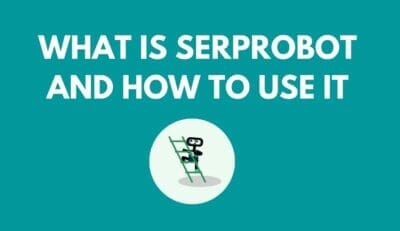Having a proper Google Shopping campaign structure will help your e-commerce business maximize its online visibility and sales. You need to stay up-to-date with the latest strategies and best practices to get better results, that’s why you need to learn what approach you can take to optimize your Google Shopping account structure. From campaigns to product groups, each element plays a crucial role in maximizing your ad performance. By understanding when to utilize multiple campaigns, ad groups, and product groups, you can gain control over bidding strategies and target specific audiences effectively.
In this guide, we will help you understand how to build an effective Google Shopping campaign structure that will match the needs of your e-commerce business.
Want to improve your Google Ads Shopping campaign?
What Does A Proper Google Shopping Campaign Structure Look Like?
When considering your account structure, it’s essential to recognize that flexibility is key. Having a single campaign, ad group, and product group may seem easier, but it limits your ability to adjust bids and target specific segments effectively. By expanding your account structure, you gain more control over bidding and segmentation, ultimately improving the performance of your Google Shopping ads.
Here’s an example of what a proper Google Shopping Campaign structure looks like:

Under an account, there will be different types of campaigns, the campaign in the middle will be the shopping ads campaign, and under that, you’ll have ad groups, product groups, and products.
Account structure isn’t fixed, you can eventually expand as you learn more. But if you have a more granular structure, it can give you more control over your campaign.
When should you use multiple campaigns?
Multiple campaigns are necessary but will also depend on what kind of business you are running and your goal. For instance, if you’re targeting different countries or languages, separate campaigns allow you to create a specific approach to each audience effectively.
You can also have a campaign for a specific search query if you have enough data gathered. This will allow you to have a specific bidding and budget on a search-query level.
You can also have a campaign that is limited to a set of products with their budget based on: category, product type, brand, item ID, and custom labels.
If you have past data on your device performance, you can even create a specific campaign based on the device type.
This level of granularity enhances your ability to optimize ad performance and maximize ROI.
When should you use multiple ad groups?
Just like with campaigns, having multiple ad groups gives advantages to your strategy. While many campaigns may have a single ad group, creating multiple ad groups based on categories, brands, or product types gives you more information into customer behavior and preferences.
SKU-level ad groups, though more advanced, offer even deeper insights and customization options for your campaigns, allowing for highly targeted advertising strategies.
Want to get better results from your Google Ads Shopping campaign?
When should you use multiple product groups?
By dividing your products based on categories, brands, or custom labels, you can set different bids for each segment, optimizing your ad spending and targeting. This level of granularity not only improves the efficiency of your campaigns but also provides valuable data on individual product performance, this allows you to make informed decision-making and continuous optimization.
Here’s how you can subdivide product groups. Go to your Google Ads shopping campaign, then go to product groups, then click the plus sign beside “All Products”.

Here you can click on the dropdown to choose which way you want your products to be subdivided. You can subdivide by category, brand, item ID, etc. (this will depend also on how you set it up on your Google Merchant account).

In this example, we’ll subdivide by product type. Select all the product groups you want to work on and click “Continue to edit bids”

Now you can set different bids on each specific product group. You can increase bids on those who are more popular or you can base the bids on past campaign performance. Once done click, save.

Now you should see here all product types with new bids. If you hover over each product group, you can see a plus icon with an “Add subdivision” note. This indicates that you can further subdivide your product group types into specific product items. This way, you can set a bid for each product under that group.
To subdivide your product group type further, click the plus icon.

Then, select how you want to subdivide it. In this example, we’ll subdivide it by item ID. Select all the products and click “Continue to edit bids” or save without editing bids (it will follow the bid set on the product group)

Set the CPC here and click “save”.

Now you have your subdivided product type, which is face cream, and you can set bids on each face cream product item. This way you will have data on each individual product and you will see which products are converting and doing well.

Sometimes, you don’t have to split all your products, so make sure to analyze your data before making decisions so you won’t be overwhelmed with a very granular shopping ads campaign.
Bonus: Using Inventory Filter
If you are making a brand-only campaign, another great strategy is setting up your inventory filter. This can be done when you are creating your shopping campaign at the start. This will save you time because only brand products will be shown under your “brand-only” campaign.
You can read more about inventory filters here.
Still don’t know where to start?
Conclusion
A well-structured Google Shopping account is important to maximize the effectiveness of your advertising campaigns. By understanding when to use multiple campaigns, ad groups, and product groups, you can get full control over bidding, segmentation, and targeting, ultimately driving better results and ROI. You have to keep in mind that granularity is important in optimizing your Google Shopping Campaign Structure. This will help you get more insights into how your products are performing and how you can reach the right audience with the right products at the right time.
If you need help with Google Ads Shopping strategy, you can set up a free consultation with our experts today!







